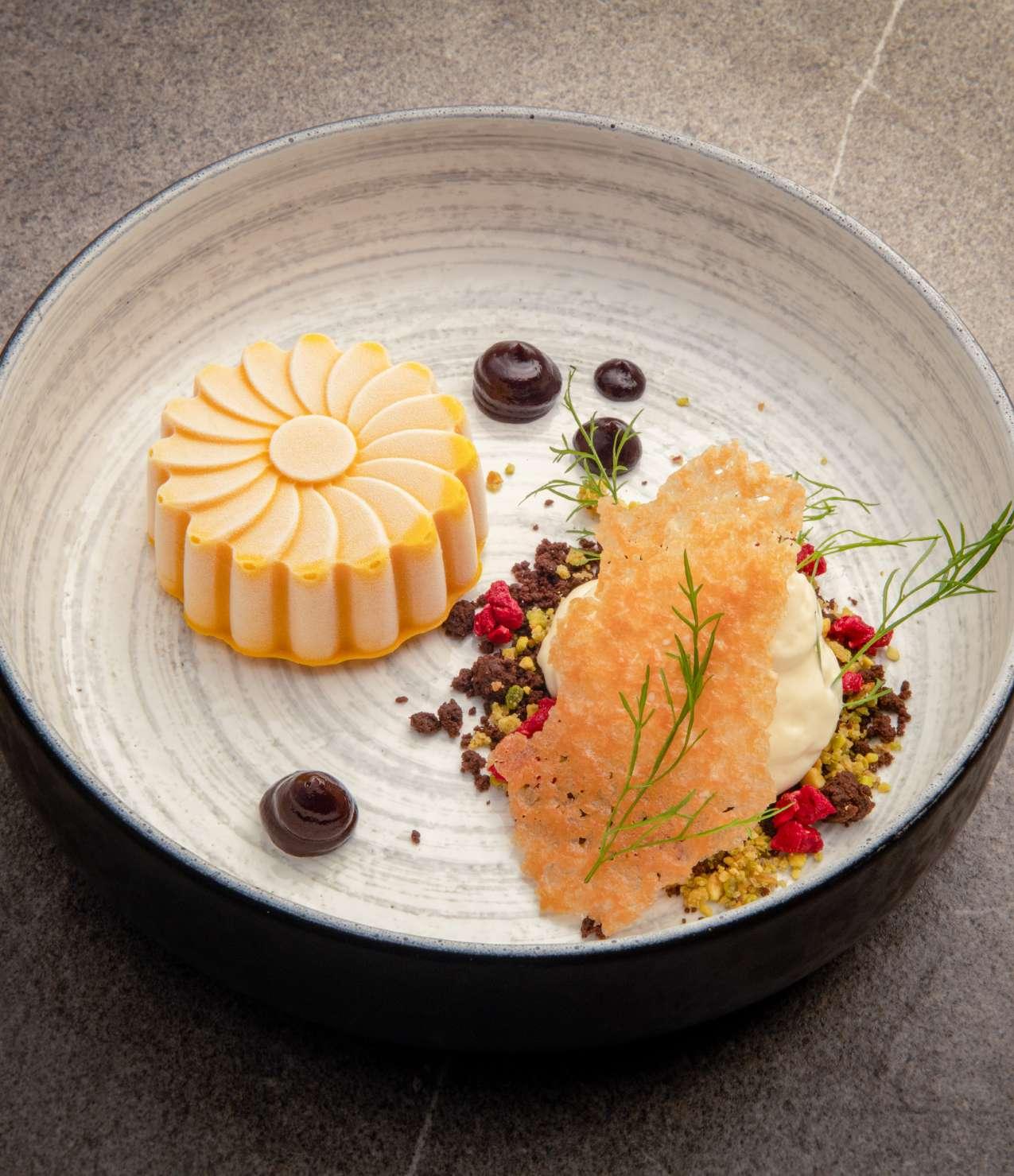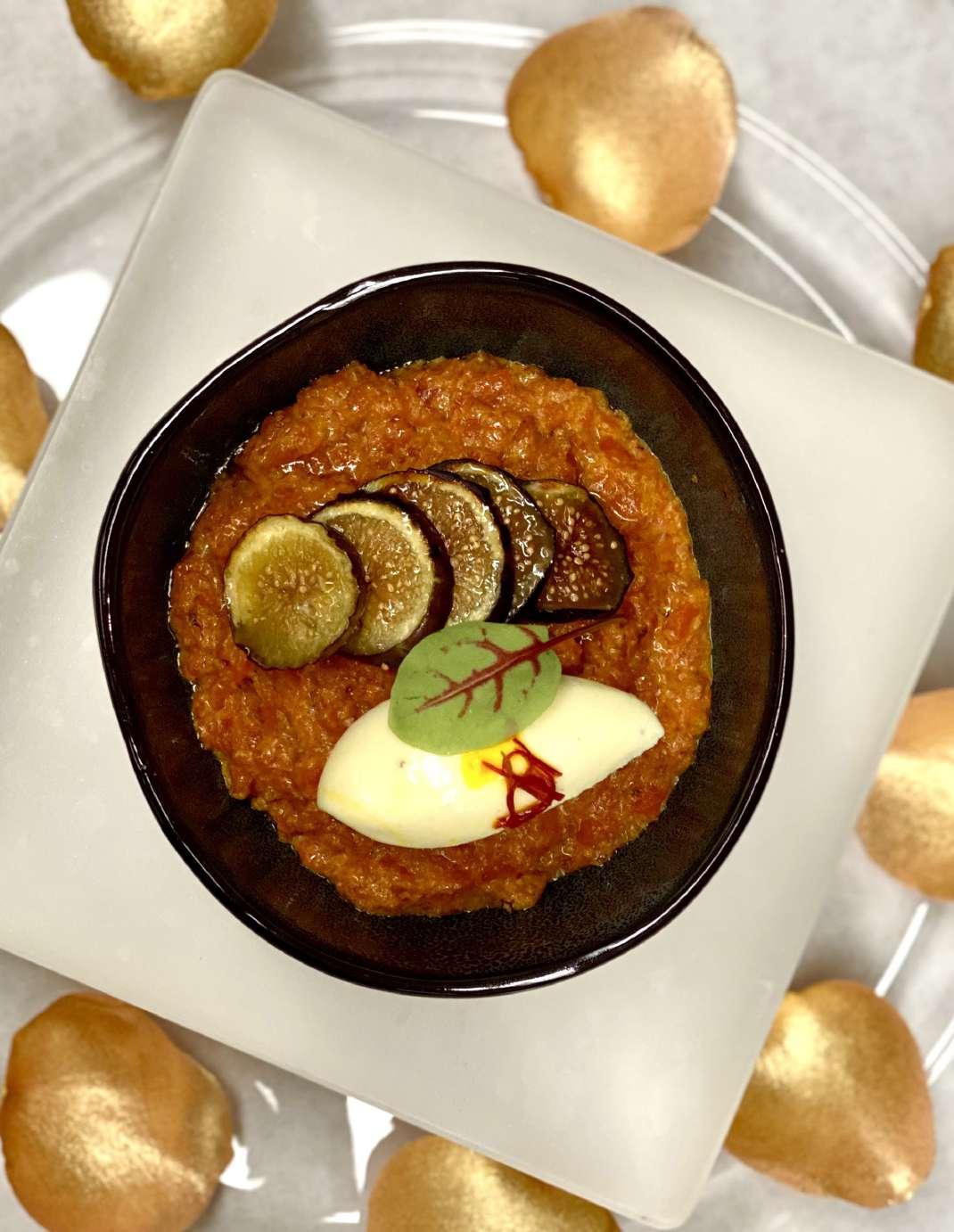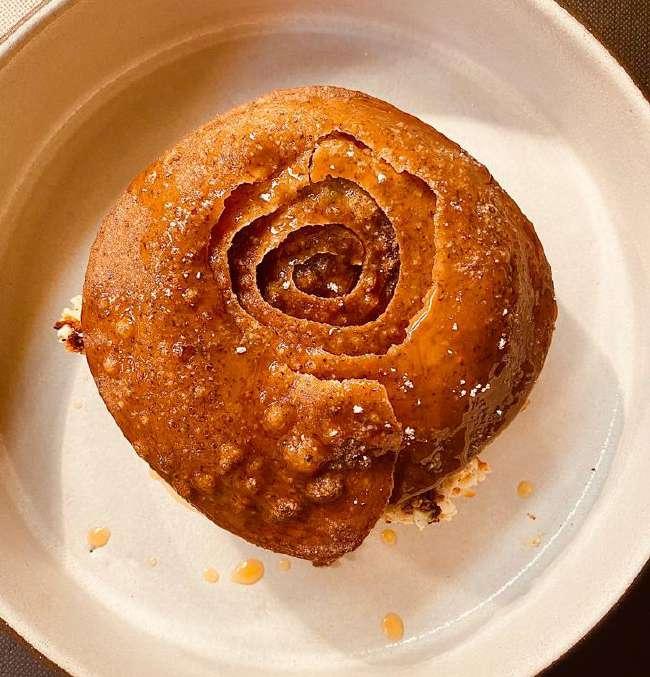
4 minute read
Sweet Nothings
by SEEMA
As the festive season approaches, there is a definite move towards making desserts contemporary, too
BINDU GOPAL RAO
The food and beverage industry has begun experimenting with traditional food to give it a new age contemporary twist, whether in terms of ingredients, presentation or cooking methods. The result is a set of innovations that produce plates full of sweet surprises.
CHANGING VISTAS Traditional sweets in India are usually laden with sugar and ghee and other ingredients heavy on the palate. However, traditional sweets are changing to remain relevant in modern times. One example is the baked gulab jamun, a modern take on a traditional dessert that can also be made without oil and without being dunked in sugary syrup. Instead, healthier sweeteners are used: jaggery from sugarcane, palmyra, date palm, honey and different kinds of dates. Also, these sweets use natural flavoring, eschew artificial additives, and come in recyclable boxes. Keeping the taste true to its origins, sweets are getting an artisanal makeover. So you have a motichoor ladoo in wine, lavender and elderflower flavors, as well as cheesecake in the form of a barfi.
According to Shwetha Rajashekar, COO of India Sweet House, “Over the last one year we have seen a huge wave of nostalgia hit the market along with people becoming equally conscious about how and what they consume.

Heirloom Carrot Halwa with Caramelized mission figs & Saffron cremeux. A dessert recently made at Perrine at The Pierre New York, A Taj hotel Photo courtesy: The Pierre New York

This has led to the revival of a lot of lost recipes made from the purest of ingredients grown with sustainable practices. This has received an overwhelming positive response.”
TWIST OF TASTE This is what Chef Hari Nayak, who currently helms the kitchen at Priyanka Chopra’s restaurant, Sona, does as well. Nayak came to America in 1996 to go to a pastry school and learn to make French pastries and chocolates.
“After my course, I got into a pastry kitchen but soon realized that, as an Indian in a French kitchen, it was not working out for me,” he said. “Many years later when I started developing menus for restaurants, I started using European pastry techniques with Indian sweets. Growing up in Udupi, I have never really been a fan of north Indian sweets as I found them very sweet for my taste. I liked local sweets like holige [akin to a sweet chapati] that were never too sweet.” He started developing Indian sweets with French influences.
“I make gulab jamun creme brulé that replaces the sugar syrup. Even my menu in Sona has chiroti (a flaky, crispy pastry) made from buckwheat flour, which I have realized makes it crispier. I use thin layers served with cheesecake and bourbon ice cream. In the season we serve it with caramelized apples,” says Nayak. Chiroti, of course, is being used as a medium of crunch in the dish but adds a great taste profile.
Nayak also makes a pear Jalebi with jaggery and poached pears. Even the ghewar and rabri from Rajasthan has undergone a makeover at Sona: it is served with ghewar and cheesecake.
“I like to give the Western audience what they are familiar with, with a little bit of India. For Indians, they also like it as it gives them something that they are familiar with. Even in Alchemy [a restaurant at Hotel Chancery Pavilion] in Bangalore we crumble Mysore Pak and make a baked cheesecake with it,” says Nayak.
EXPERIMENTS GALORE Most of our sweets are not desserts, but celebratory (or otherwise) bites to be enjoyed at any moment of the day. Given current meal patterns, and everyone’s effort to reduce the intake of sugar, one has to move them towards the end of a meal.
“The effort to elevate our sweets into Western-style desserts began back in the 90’s (when fusion cooking was at a high point),” says Ashfer Biju, executive chef and director, food and beverage, at Perrine NYC. “Creating sweets and Indian desserts with locally available and new(er) or unusual ingredients is in vogue. For example, Chef Vittal Shetty in California makes an unbelievable raspberry ladoo and a delicious beet burfi as part of his mithai collection in Xari foods sweets. “Chefs are taking popular Indian desserts and sweets and making them in their kitchens from scratch, adding their twist to it, and presenting them as they would otherwise present Western desserts. No cheesecake there, but just a perfect ghewar, possibly combined with rose petal kulfi and plated on a coupe plate, with a gold tuile.”
CONTEMPORARY CUES While many traditional Indian sweets have not changed, some chefs make their own interpretations.
“I do think what’s changed is that chefs are being inspired and putting their own spin on these desserts,” says Maneet Chauhan, award-winning chef, author, television personality, and founding partner and president of Morph Hospitality Group in Nashville, TN. “For example, I do a version of the traditional carrot halwa and make carrot halwa whoopie pies, which is a homage to where I have come from and where I have ended up. Another example of this is our gulab jamun cheesecake served at Chauhan Ale & Masala House, which is made with traditional gulab jamuns that’s modernized by using it in cheesecake. The end result is so good.”
So, this festive season, when you are looking for desserts to make or buy, consider going for the twist of taste and see how it lights up (pun unintended) your taste buds.










